I may have flown to Dallas for American’s leadership conference last week, but that was merely an appetizer before the main course. The airline’s comms team set up an event for eight of us in the media to stay up all night with American and learn about different parts of the operation ranging from simulators to the hangar and everything in between. There were several different ways I thought about writing this up, but I’ve decided to just run through it chronologically.
Today, I’m starting with the first half of the night when we were in the operations center. Look for a future post to cover our visit to the pilot simulators, maintenance hangars, and American’s DFW tower. (Note: All times Central)
[Disclosure: American provided flights and hotel for this event]
7:14pm
Feeling refreshed after a half-hour nap and a shower, I headed down to the lobby of the Hyatt in downtown Dallas to join the group. Fortunately, the doors didn’t shut on me 10 minutes before departure, and I was allowed on the bus. We took the long ride out to American’s Integrated Operations Center (IOC) on the airline’s new headquarters campus just south of Dallas/Fort Worth International Airport (DFW).
Once we arrived, we were badged (they take security seriously, as you’d hope) and escorted into a big command center conference room that overlooks the operations floor. The command center is used for crises, and that means it doesn’t need to be used too often. The room is wired with computers and a wall of giant screens so they can communicate quickly and efficiently when it becomes necessary. That night, it was fortunately all ours.
8:24pm

American’s President Robert Isom stopped in with his wife to come say hello. They had just finished with dinner, and Robert gave us a short talk about the importance of the IOC to the airline. It was a casual, broad overview of what we were going to see that night. Then he took off, and we were left at the mercy of the comms team. Fortunately they had prepared well.
8:44pm
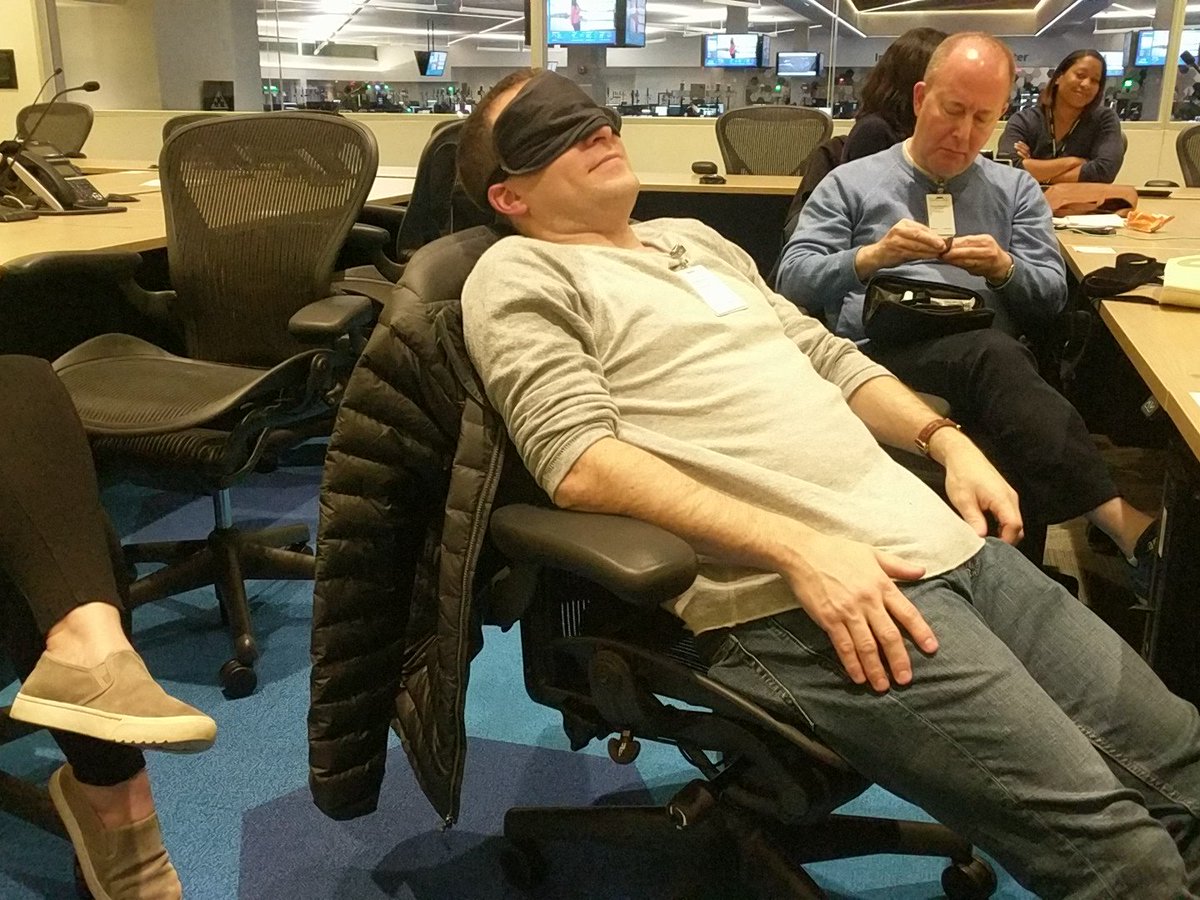
Erwan Perhirin had stepped up to the plate to talk to us about the onboard experience. If we’re judging importance by length of title, then Erwan is very important. He’s the Managing Director of Customer Experience Marketing, Onboard Products.
Erwan clearly got lucky with the early shift when we were all still coherent. He ran through a list of what American is doing to improve the onboard product. (Save your snarky responses… you aren’t the only one who thought it.) But most importantly, Erwan brought us samples to try out.
We had amenity kits passed around, and some, like Scott Mayerowitz at The Points Guy, opted to model the merchandise. I was less interested, mostly because I hadn’t eaten dinner and was starving.
9:05pm
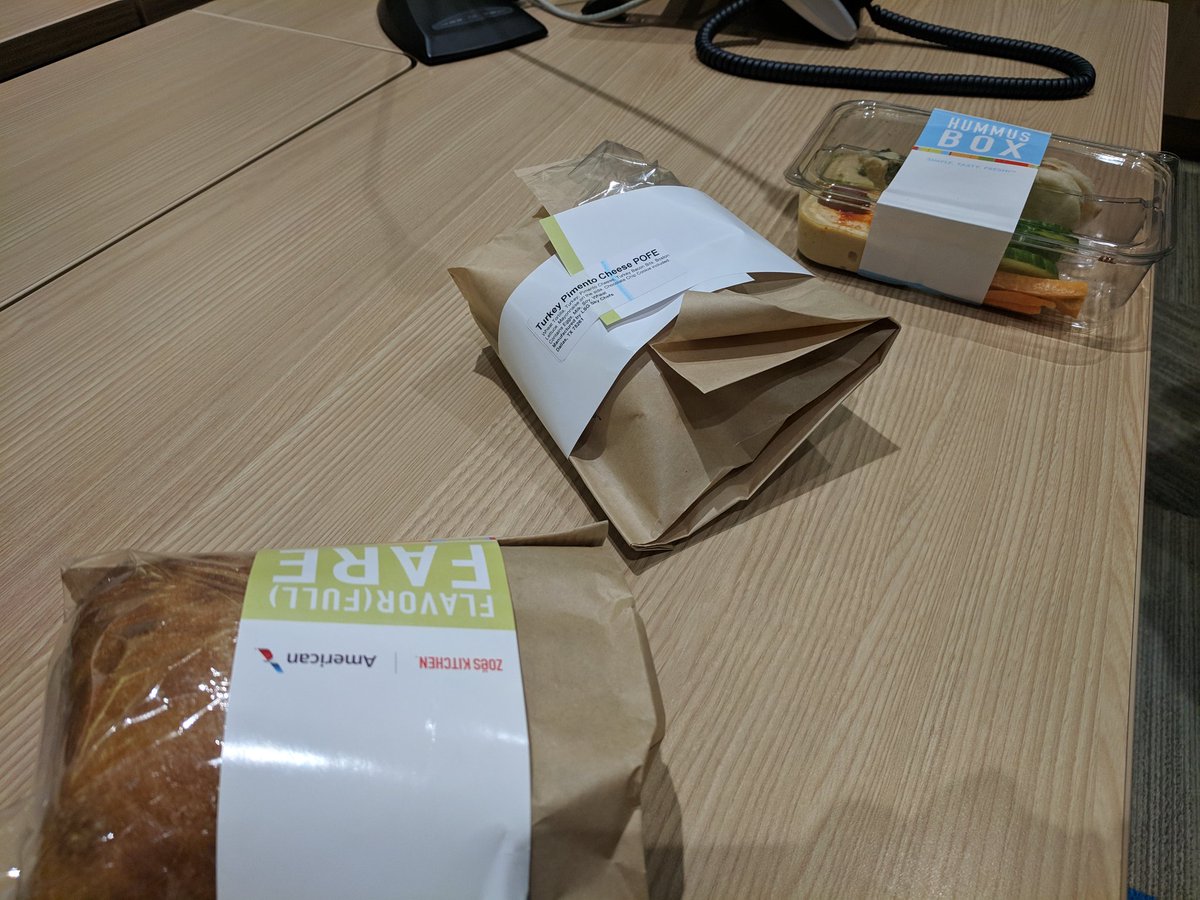
I get my food.
American recently partnered with Zoës Kitchen for its buy onboard product. I had bought the fruit and cheese plate coming out, but the other three non-breakfast options were available to sample this time around. I passed on the hummus since it’s pretty hard to mess that up. The wrap was squished and looked far from appetizing, but it actually tasted pretty good. The sandwich? There was just too much bread. I wouldn’t buy it. But I was now full and ready to push on. Erwan left us, and he was replaced by
Annette Hernandez, Senior Manager of Social Media Customer Service.
Annette runs the team of 25 that handles all the social media work. The team is spread out between headquarters and the IOC. They quickly found real value in having social media people located right where the action was, and they haven’t looked back. Annette showed us some of the more interesting tweets (public, not DM) that had come in, and then we played a little game where we had to decide how we would respond to a customer tweet. It’s harder than it looks. Is someone just complaining generally or do they need a response? With thousands of tweets coming in each day, they have to make a lot of quick decisions.
At this point, we had been sitting for too long and my carb-induced coma was setting in. It was time to make a move, but first I had to get comfortable.
10:11pm
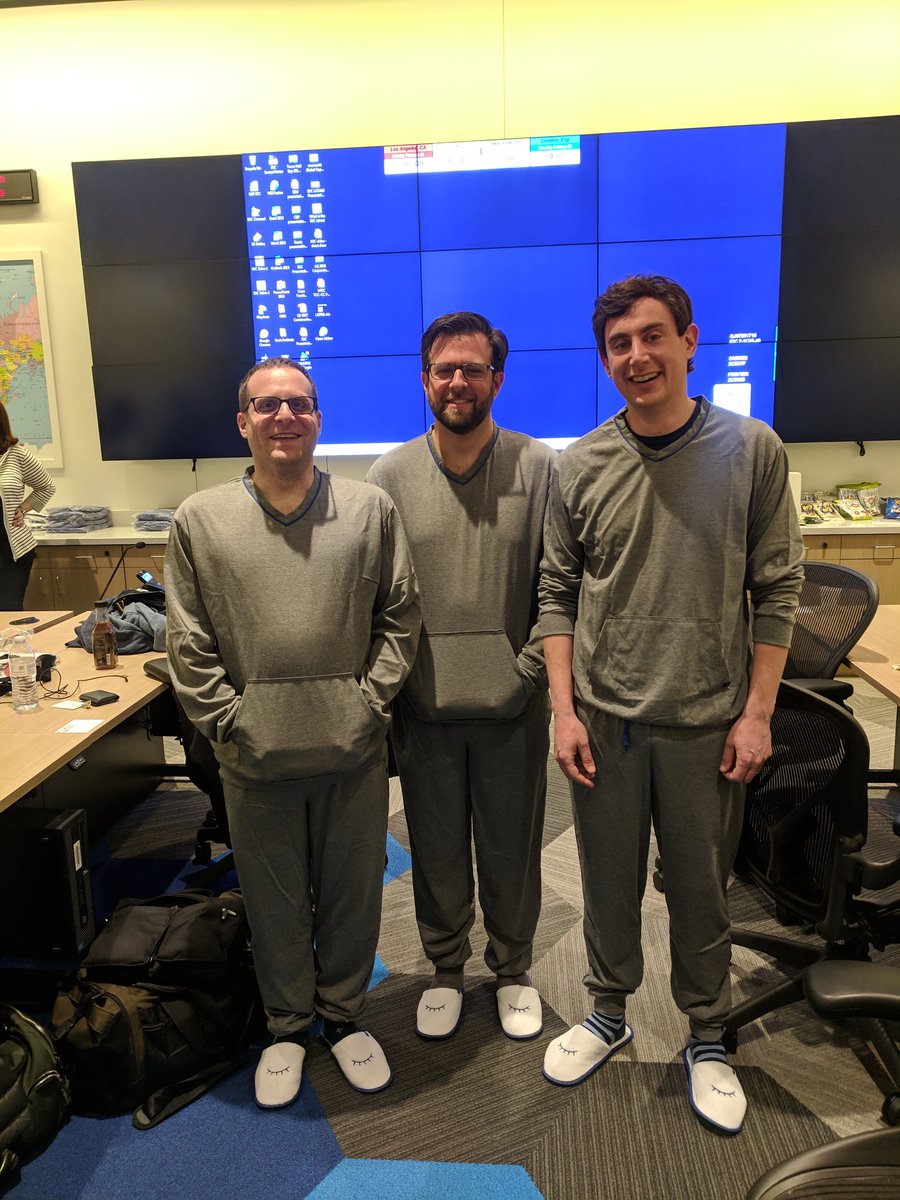
Erwan had left us all with a pair of premium cabin pajamas, but only three of us were willing to try them on. That’s Scott Mayerowitz again on the left and Brian Sumers from Skift on the right. We also had those stylish slippers on, and no, we didn’t bother changing for our tour of the IOC with Frank Coppola, IOC director.
10:28pm

We hit the floor. The first thing I noticed is that the number of screens you have seemingly determines your importance. The second thing I notice is that pretty much everyone has a dot matrix printer. It’s amazing that this is still a thing.
10:30pm

It was a particularly busy day in the IOC thanks to some nasty weather north and east. There were a lot of cancellations, but things had begun to wind down by the time we walked in. The IOC is set up as one giant room with windows on the sides. The center was built a couple years back and it’s meant to withstand a strong tornado. You’d expect it to be really loud with all those people in one space, but it’s not. There is a lot of sound-dampening material used in the walls, and there is white noise pumped in as well. It’s oddly, peacefully quiet.
10:35pm

Clearly we had found one of the more important people. Above is an international flight dispatcher’s workstation. He was planning the trip from LA down to Sydney when we were there, and there was some rough weather over Samoa that was causing them to fly fairly far out of the way. That’s the red/orange blotch toward the bottom of the map on the right side. Everyone we ran into was calm and collected, as you’d have to be to work this job. It is quite comforting to see.
12:13am
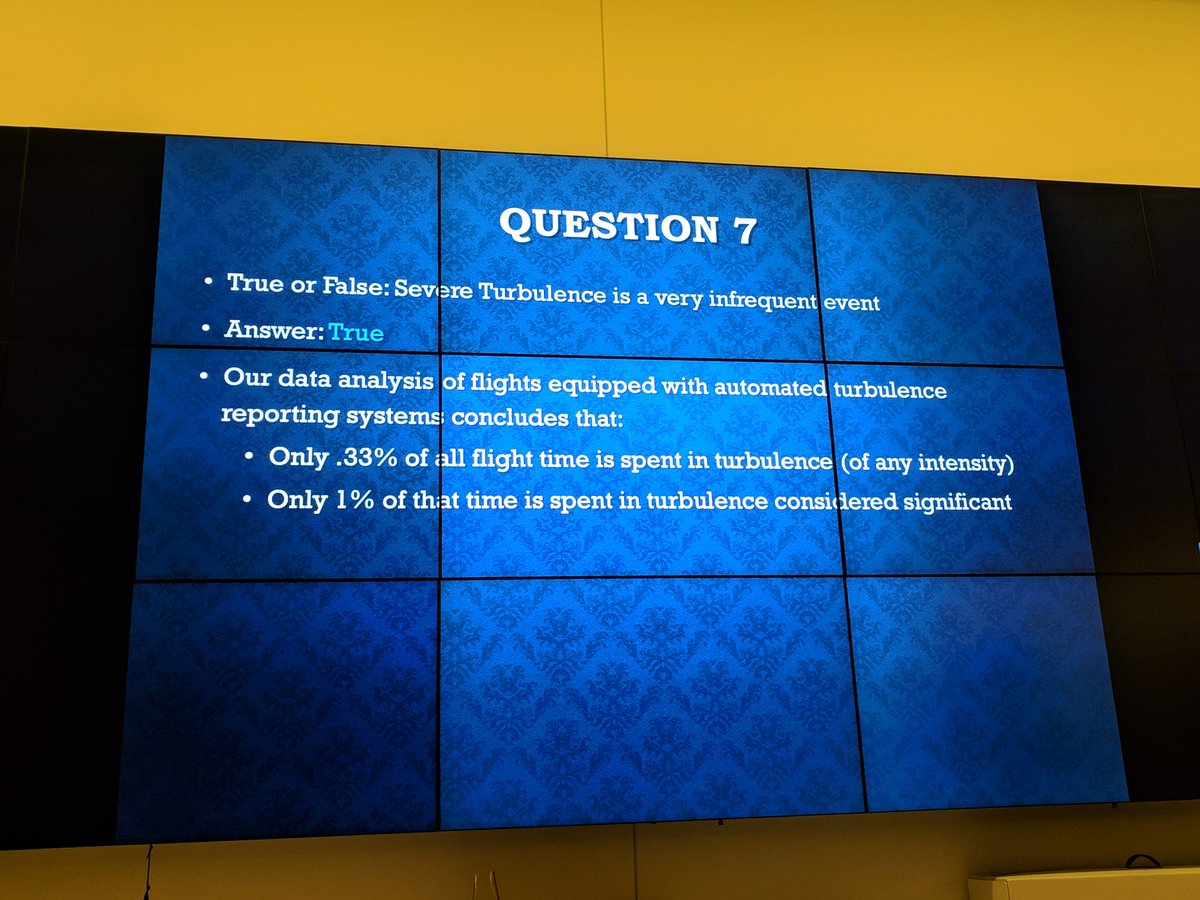
Our tour had finished, and we came back up to the command center for a talk with Steve Abelman, Program Manager IOC Weather Technology. By this time, we had talked about everything weather and he was giving us a little quiz he had put together. (Interactivity was key to keeping us awake.)
American doesn’t have in-house meteorologists any longer. This function was outsourced to The Weather Company years ago. Steve is the only meteorologist on staff these days. He says that having it outsourced to a big company with a lot of resources works out well for American. There are some Weather Company staff embedded in the IOC, but they also have a head office on the east coast that cranks out charts to help with weather and turbulence predictions.
As you can see in the photo above, turbulence is an incredibly rare thing. I was actually shocked to see that number. (This stat doesn’t include light chop, but it does include light to moderate turbulence, whatever registers on the sensors American has on its airplanes.) Steve was asked whether turbulence was better or worse today than in previous years (a climate change question, naturally), but he hesitated to answer because of all the variables. He did say that the predictive technology to identify severe turbulence is the best it’s ever been. The bigger issue is being able to better predict light to moderate turbulence.
12:37am
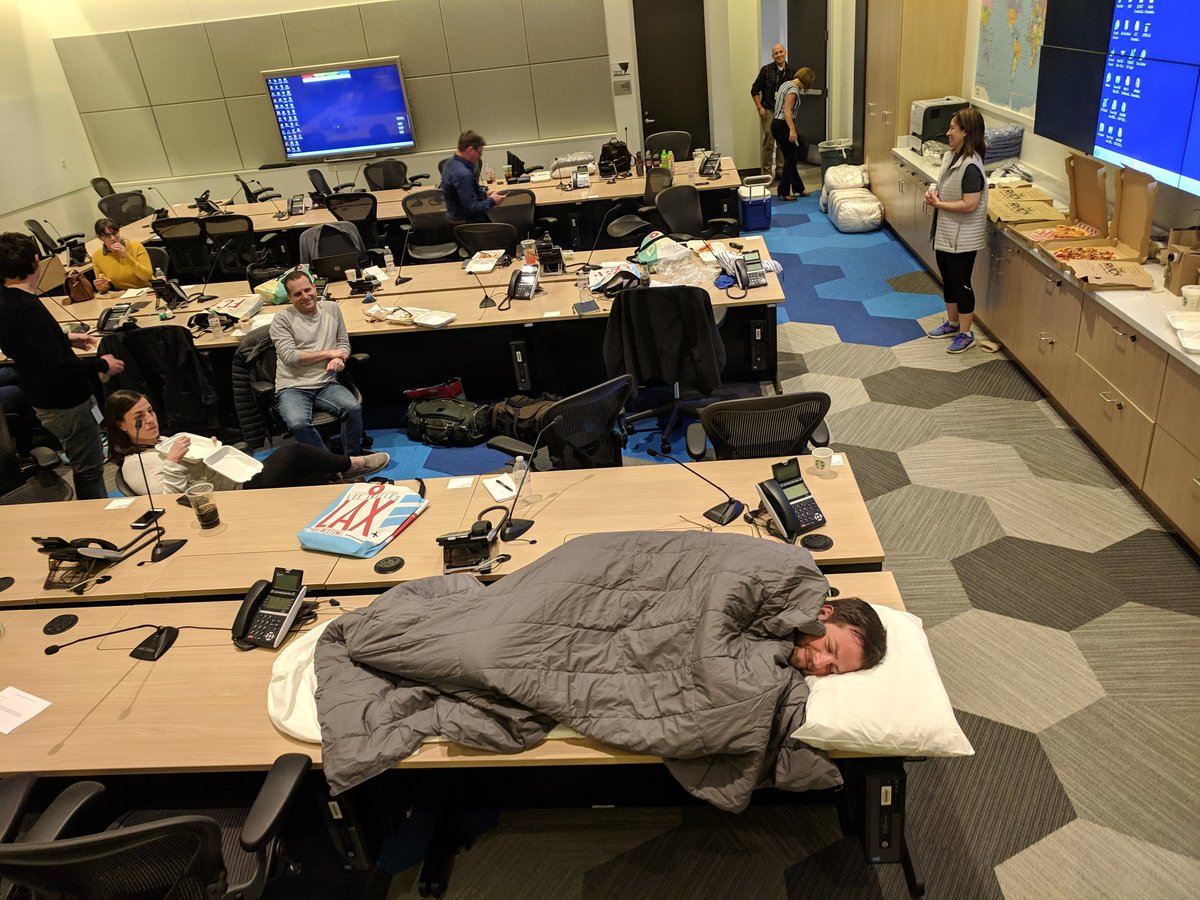
It was time for a pizza break, but I was most definitely not hungry. I was just tired. American had brought in one of the Casper mattresses that it gives out on its longest flights in premium cabins. I rolled it out on a desk, whipped out a pillow and blanket, and got comfy just in time for Beth Zeoli, System Customer Service Manager to begin talking.
Beth is in the IOC, on the “bridge” which is a slightly raised area at the center of the room which can be thought of as core for coordination. She told us all about how they identify problems and then try to solve them. I asked her if it ever helped when a customer tweeted to the airline about holding a tight connection. She said it couldn’t hurt, so, well, keep that in mind.
I was in my makeshift bed the entire time, and you know what? It was quite comfortable even plopped on top of a hard desk. That’s a great mattress. I was content just lying there, but no, it was time to take a test. Seriously.
1:37am
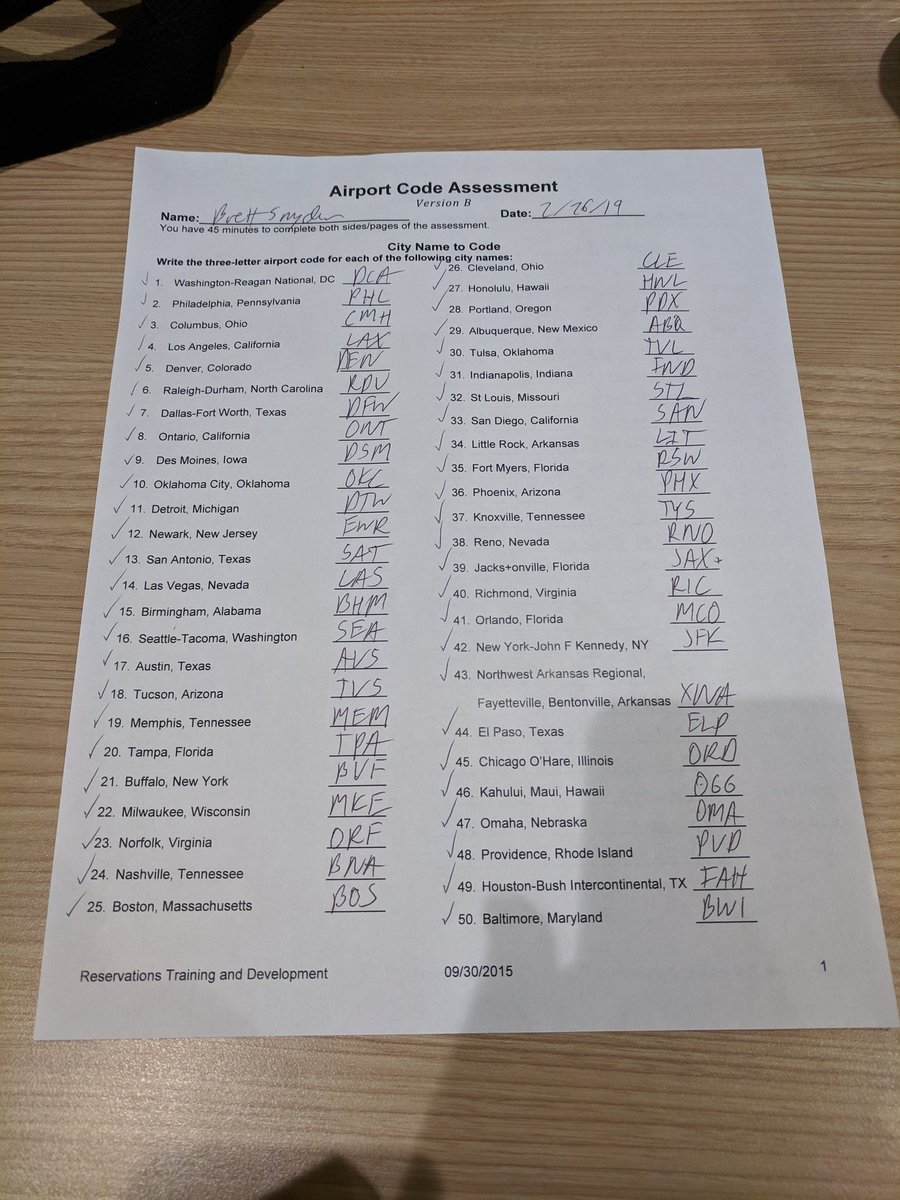
Apparently the comms team thought it would be fun to have everyone take an airport code quiz that reservations agents must take before coming onboard. Unlike res agents, we were given no time to study, and we were doing it in the middle of the night. Being the AvGeek that I am, I got all 75 of them right. There was one other person who challenged me for supremacy, but he had put ILM down as Wilmington, Delaware instead of Wilmington, North Carolina. My prize? A big honking model of an American aircraft. I’m eagerly awaiting its arrival at my house.
With that, it was time to go get some cool night air and play with simulators. I’ll have that along with our visit to the maintenance hangar and American’s DFW tower in the next post.
